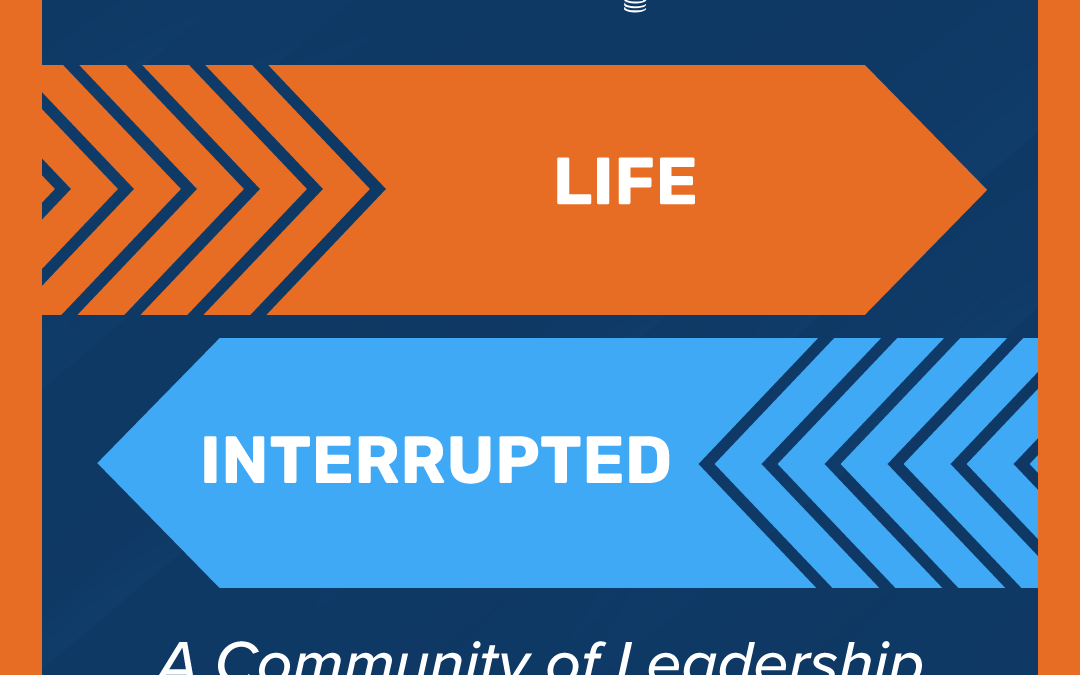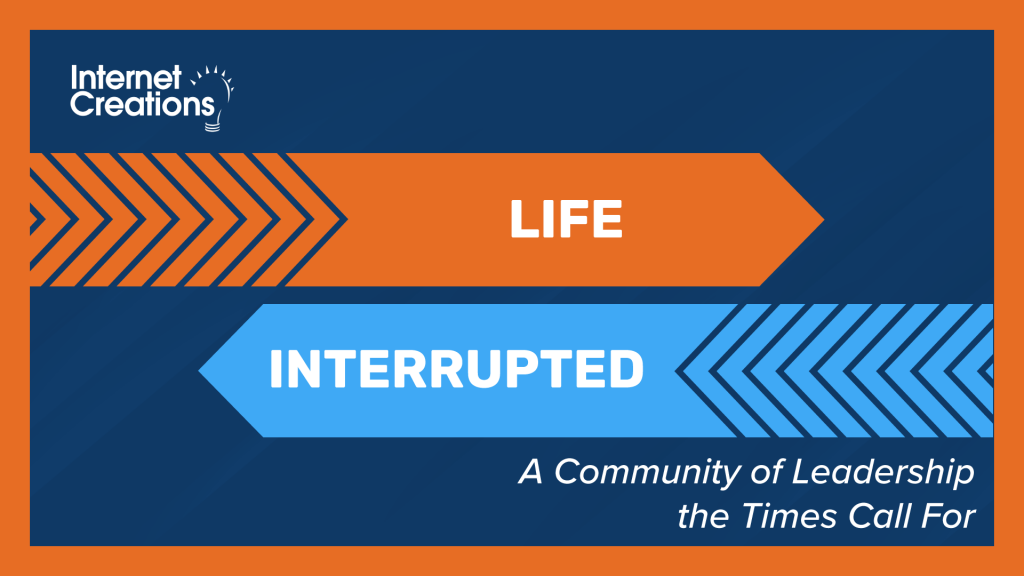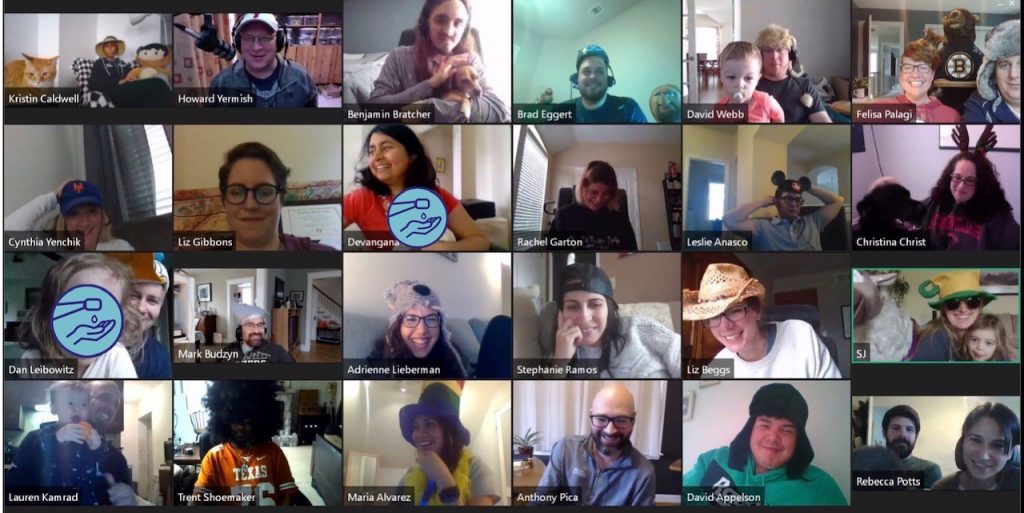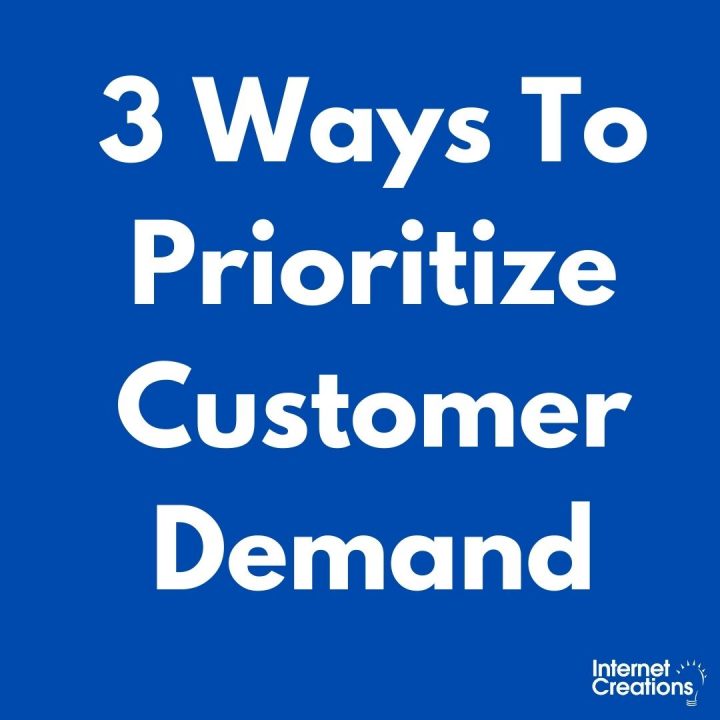Life Interrupted: A Community of Leadership the Times Call For


I’m not a stranger to a life interrupted. After a motorcycle accident 22-years ago left me with limited short- and long-term memory, daily migraines, and several other side effects, I had to leave university and figure out what to do. Suddenly I was at home, isolated, and feeling uneasy as I figured out my new future. That’s a story for another time, but those old memories flooded back when COVID-19 interrupted all our lives.
When we made the call to close our offices and to work remotely, my mind zipped to logistics and budgets. However, I also knew we needed more for our team than what we usually offer. I didn’t want these wonderful people to experience the same isolation and unease that I experienced 22 years ago.
Here is what our leadership team did to keep our sense of community, ease fears, and empower our team to take control of our new normal.
Good Leaders Communicate Frequently
In times of uncertainty, more frequent communication is everything. Hearing information helps people make their own plans that impact those around them. It also conveys that the business will be okay, that they’re important to us, and instills trust because of our level of transparency.
As a company that runs entirely on the Salesforce platform, we leverage Chatter quite heavily. For example:
Update daily
Glen (Our Head of Talent) or I send a daily communication company wide about COVID-19 updates that are of interest to our team. These communications cover state and federal changes, reminders about physical and mental healthcare coverage in our plan, a message from our financial advisor who manages our 401k plan, IT tips, and self-care tips. This week we will cover how we’re helping our customers, partners and vendors.

Align management
We have a group chat to share information and get quick turnaround on team questions that managers may not know the answer to. We also carved out a special meeting prior to our monthly company meeting to discuss concerns that managers are hearing, share team engagement tips, and collaborate on how to best support our employees.
Motivate multipliers
Managers can’t do it all. Our team has been great about taking the lead on several topics by leveraging affinity groups who have become more active during this time. For example:
- Family Talk shares tips to manage their IC workload in parallel with the new responsibility of teaching their school-aged children from home.
- The Daily Paw features pawsitively great articles and furry coworker pics.
- Performing Arts Collective posts upcoming online performances.
Great Leaders Encourage Celebrations

Plan virtual socials
Our company calendar includes virtual socials such as happy hours, Product team application chats, and moments of movement such as a recent plank challenge. There is one daily social called, “Coffee” Talk. The purpose of this 25-minute session is to hang out as if we are in our office kitchen. Attendance, turning on your webcam, and talking are all optional.
Encourage your cheerleaders
Ellen, our office manager, loves to look out for our team. Ellen quickly established her remote rhythm to check in with team members, asking how they’re doing, seeing if they need anything, and keeping up on the latest in their lives.
Seek out moments to applaud
For our monthly company meeting, managers focused more than usual to find employee highlights from the last month. Even though the team was on mute to keep background noise down, they could cheer by applauding on webcam, and making comments in chat.
Superior Leaders Look out for the Health of Others
We recognize that COVID-19 is disruptive to our customers and partners, and they have a lot of questions. We’re increasing approval authority for employees and managers, so our employees can do more, quickly.
We looked for ways to support and be more responsive to our customers, partners and employees. For example:
Supply a work from home environment
Employees were encouraged to take monitors, docking stations, and even their Herman Miller chairs home to use during the Pandemic. In addition, IT held office hours and made it a priority to help people set up their home offices.
Increase approval authority
We recognize that COVID-19 is disruptive to our customers and partners, and they have a lot of questions. We’re increasing approval authority for employees and managers, so our employees can do more, quickly.
Help find the new normal
As our managers engage in weekly one-on-ones, they’re helping employees to find their new rhythm by asking about plans for the week ahead, blockers, assistance needed, and overall stress level.
Use flex time
Flex time is already in our policy. In other words, if an employee needs to do something personal during normal business hours, they can make up that time earlier or later in the day, or another day of the week. This frees them up for life’s challenges, like hitting the grocery store when it’s quiet, checking in on their parents, or homeschooling their kids.
Amazing Leaders Learn and Adjust
Listen to our team
We use TINYpulse, one-on-ones, and direct messaging to seek regular feedback. Sometimes it’s as simple as following what our team adapts to: at the company meeting, George wore a silly hat on camera. Several people caught on and grabbed a hat to wear. By the end of the meeting, it was a “thing” and has since happened on several calls.
Establish clear guidelines and adjust
We held our first virtual company-wide meeting. While we’re not strangers to virtual meetings, this was different. Here’s what we established:
- Put everyone on mute – Like with webinars, we minimized background noise by having everyone on mute. Questions were fielded through a chat tool, and everyone could enjoy jokes on chat and via webcam.
- Establish the speaker process – Speakers knew their speaking order. When a speaker finished their topic, they handed over to the next speaker much like anchors on the news, and then went on mute.
- Share responsibilities – I’m okay at delegating, but mistakenly thought I could handle the management of this myself. Mistake! In our next session, duties will be split between Mike and me. This includes opening and recording the session, fielding public and private questions, keeping the meeting moving and managing time, and displaying speakers’ visuals.
Adjust quickly to surprises
While we anticipated many changes, surprises popped up throughout the week. We quickly collaborated to find solutions, so potentially large issues were just speed bumps. For example, our webinar tool kept freezing up at the top of each hour when the world was jumping on webinars. Our IT team recommended everyone start meetings 5 minutes before/after the top of the hour, and also recommended a backup webinar tool.

I recognize that all our businesses are different, so while some of these ideas work for you, others might not. Hopefully at least one of these ideas is beneficial.
Keep an eye on the IC blog for more tips on leading through disruption in the coming weeks!
- Juneteenth: A note from our CEO - June 19, 2020
- Life Interrupted: A Community of Leadership the Times Call For - March 26, 2020
- Customers Expect More in 2020: How to Deliver Better Service and Stand Out - January 2, 2020


